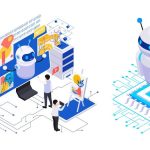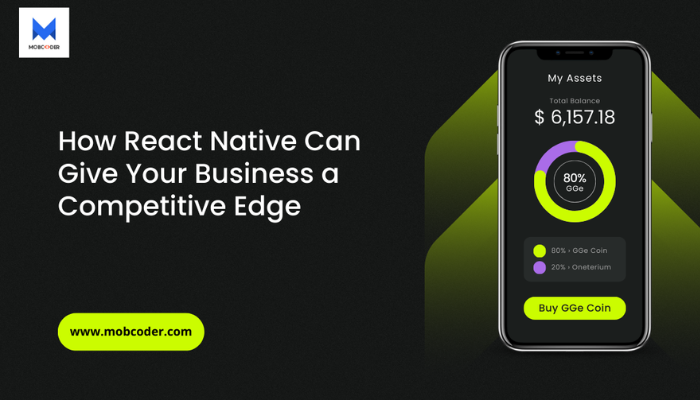Learn How to Build AI Software in Five Easy Steps

Artificial Intelligence (AI) is transforming industries by enabling machines to mimic human intelligence and perform tasks that require cognitive abilities. From natural language processing to predictive analytics, AI is becoming a crucial component of modern software development companies in UAE . If you’re interested in building AI software, this guide will walk you through the process in five easy steps. Whether you’re a seasoned developer or a beginner, these steps will help you get started on your AI journey.
Step 1: Define Your AI Software’s Purpose and Objectives
Before diving into the technical aspects of AI software development, it’s essential to define the purpose and objectives of your project. Consider the following questions:
-
What problem does your AI software aim to solve?
-
Who is your target audience, and how will they benefit from the AI solution?
-
What specific tasks or functions will the AI perform?
Clearly defining the purpose and objectives will help you stay focused and guide the development process. For instance, if you’re developing AI software for customer service, your goal might be to create a chatbot that can handle customer inquiries efficiently.
Example Objective: Customer Service Chatbot
Purpose: To improve customer service by automating responses to common inquiries. Objective: Develop an AI-powered chatbot that can understand and respond to customer queries in real-time, reducing the need for human intervention.
Step 2: Gather and Prepare Data
Data is the cornerstone of AI development. AI models learn from data, so it’s crucial to gather high-quality, relevant data for your project. Depending on your objectives, you might need different types of data, such as text, images, or numerical data.
Steps to Gather and Prepare Data:
-
Identify Data Sources:
-
Internal databases
-
Public datasets
-
APIs and web scraping
-
-
Collect Data:
-
Ensure you have a sufficient amount of data to train your AI model. The more diverse and comprehensive your data, the better your AI will perform.
-
-
Clean and Preprocess Data:
-
Remove duplicates and irrelevant information.
-
Handle missing values and outliers.
-
Normalize and standardize the data if necessary.
-
-
Label Data:
-
If you’re working on a supervised learning project, you’ll need labeled data. Labeling involves annotating the data with the correct output. For example, if you’re developing an image recognition AI, you’ll need to label images with the objects they contain.
-
Example Data Preparation: Customer Service Chatbot
-
Identify data sources: Extract customer service transcripts from your internal database.
-
Collect data: Gather a large dataset of customer inquiries and responses.
-
Clean and preprocess data: Remove irrelevant information, standardize the text format, and handle spelling errors.
-
Label data: Label each customer inquiry with the appropriate response.
Step 3: Choose the Right AI Model and Framework
Choosing the right AI model and framework is critical for the success of your project. The choice depends on your specific use case and the type of data you’re working with.
Common AI Models:
-
Supervised Learning Models: Used for tasks where you have labeled data, such as classification and regression.
-
Unsupervised Learning Models: Used for tasks where you don’t have labeled data, such as clustering and anomaly detection.
-
Reinforcement Learning Models: Used for tasks where an agent learns by interacting with an environment, such as game playing and robotics.
-
Deep Learning Models: Used for complex tasks involving large amounts of data, such as image recognition and natural language processing.
Popular AI Frameworks:
-
TensorFlow: An open-source library developed by Google, widely used for machine learning and deep learning applications.
-
PyTorch: An open-source library developed by Facebook, known for its flexibility and ease of use.
-
Keras: A high-level neural networks API, written in Python, and capable of running on top of TensorFlow and other frameworks.
Example Model Selection: Customer Service Chatbot
-
Model: Sequence-to-sequence (Seq2Seq) model, suitable for text-based applications like chatbots.
-
Framework: TensorFlow, for its robust support for natural language processing.
Step 4: Train and Validate Your AI Model
Training your AI model involves feeding it data and allowing it to learn patterns and relationships. Validation ensures that the model generalizes well to new, unseen data.
Steps to Train and Validate Your AI Model:
-
Split Data:
-
Divide your dataset into training, validation, and test sets. A common split is 70% for training, 15% for validation, and 15% for testing.
-
-
Select Training Algorithm:
-
Choose an appropriate training algorithm based on your model and framework.
-
-
Train the Model:
-
Feed the training data into the model and adjust the model parameters to minimize error.
-
-
Validate the Model:
-
Use the validation set to fine-tune the model and prevent overfitting.
-
-
Evaluate the Model:
-
Assess the model’s performance using the test set. Common evaluation metrics include accuracy, precision, recall, and F1 score.
-
-
Tune Hyperparameters:
-
Adjust hyperparameters, such as learning rate and batch size, to optimize the model’s performance.
-
Example Training: Customer Service Chatbot
-
Split data: Divide the customer inquiry dataset into training (70%), validation (15%), and test (15%) sets.
-
Select training algorithm: Use a gradient descent algorithm for training the Seq2Seq model.
-
Train the model: Feed the training data into the model and adjust parameters to minimize response errors.
-
Validate the model: Use the validation set to fine-tune the model and prevent overfitting.
-
Evaluate the model: Assess the chatbot’s performance using accuracy and response relevance metrics.
-
Tune hyperparameters: Adjust the learning rate and batch size for optimal performance.
Step 5: Deploy and Monitor Your AI Software
Once your AI model is trained and validated, it’s time to deploy it into a production environment. Deployment involves integrating the AI model into your application and making it accessible to users.
Steps to Deploy and Monitor Your AI Software:
-
Integrate the Model:
-
Embed the AI model into your application using APIs or other integration methods.
-
-
Set Up Infrastructure:
-
Ensure you have the necessary infrastructure to support the AI model, such as cloud services or on-premises servers.
-
-
Launch the Software:
-
Make the AI software available to users through web or mobile applications.
-
-
Monitor Performance:
-
Continuously monitor the AI model’s performance to ensure it meets user expectations and performs reliably.
-
-
Update and Improve:
-
Regularly update the AI model with new data and improvements to maintain and enhance its performance.
-
Example Deployment: Customer Service Chatbot
-
Integrate the model: Embed the Seq2Seq model into your customer service platform using RESTful APIs.
-
Set up infrastructure: Use cloud services like AWS or Google Cloud to host the chatbot and handle user requests.
-
Launch the software: Deploy the chatbot on your website or mobile app for customer interactions.
-
Monitor performance: Track the chatbot’s response accuracy, user satisfaction, and system reliability.
-
Update and improve: Continuously update the chatbot with new data and refine its responses based on user feedback.
Conclusion
Building AI software involves a series of systematic steps, from defining the purpose and gathering data to choosing the right model and deploying the solution. By following these five steps, you can create effective and reliable AI software that addresses your specific needs and delivers value to your users. Remember, the key to successful AI software development lies in continuous learning, adaptation, and improvement.
Whether you’re looking to enhance customer service, improve operational efficiency, or innovate with new AI-driven features, these steps will guide you through the process. Embrace the potential of AI and start building transformative software solutions today. With the right approach and dedication, you can harness the power of AI to drive growth and success in your software development projects.
 To read more about A Comprehensive Guide to Building a SaaS Platform Like Canva!
To read more about A Comprehensive Guide to Building a SaaS Platform Like Canva!




